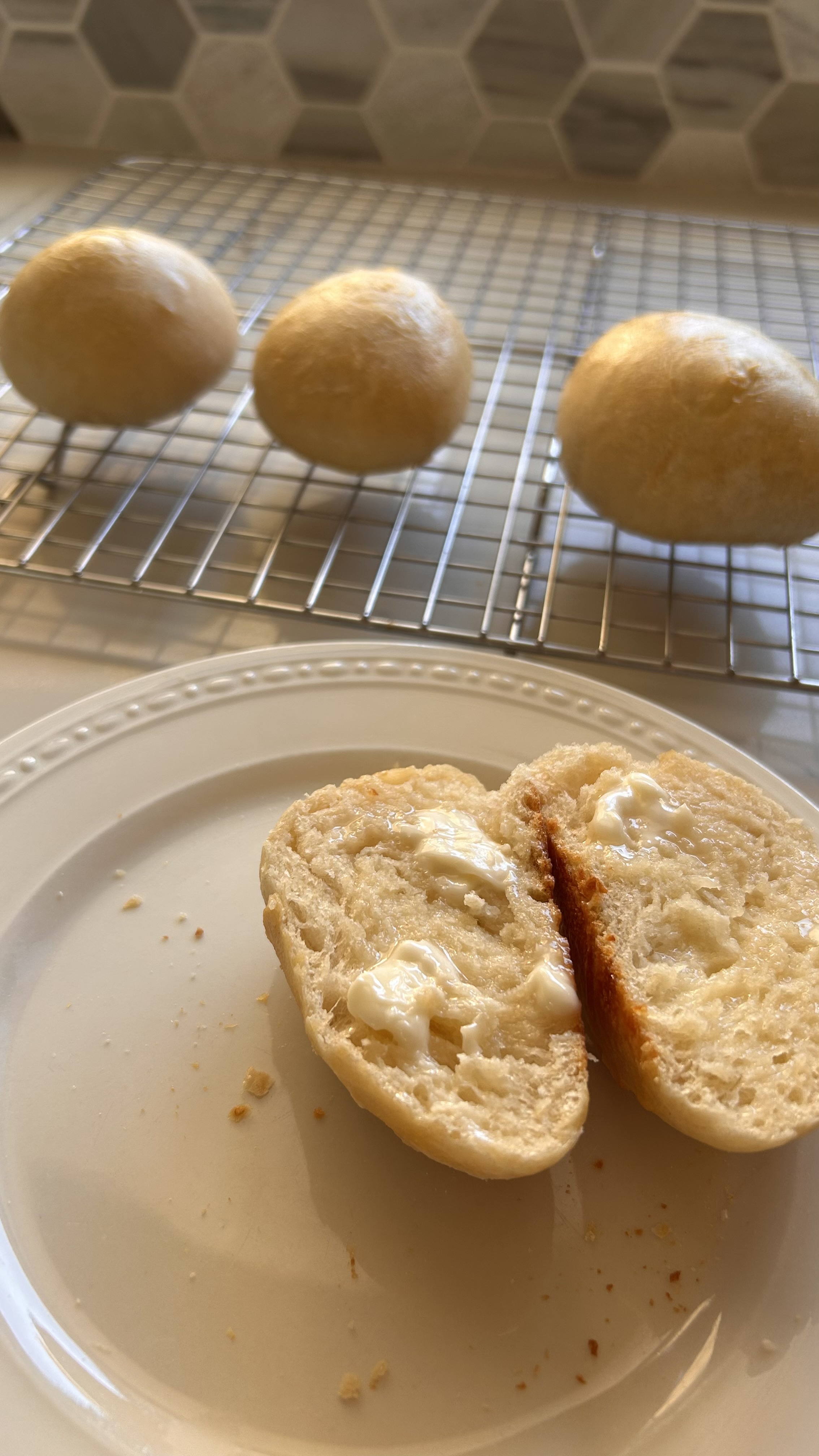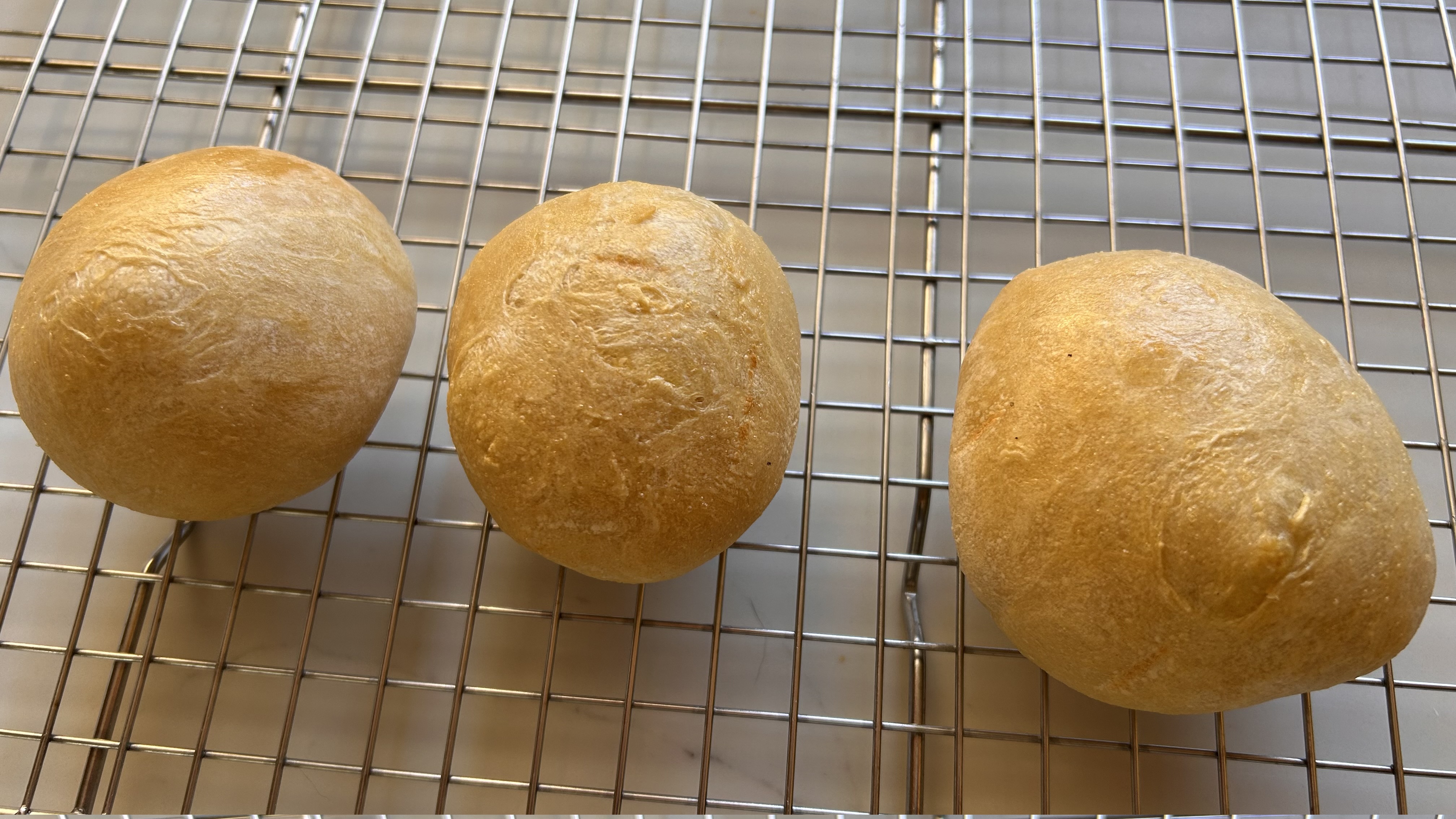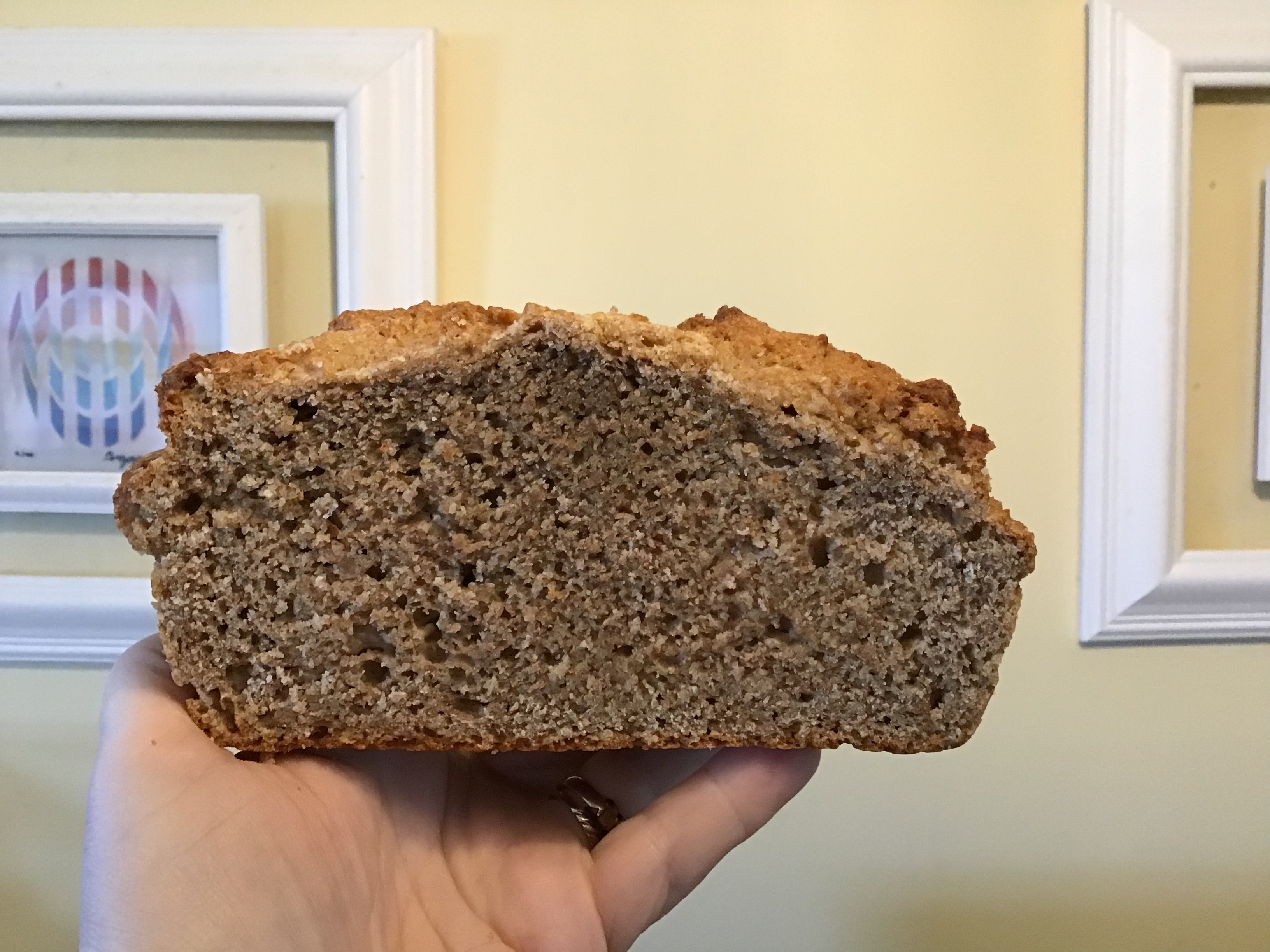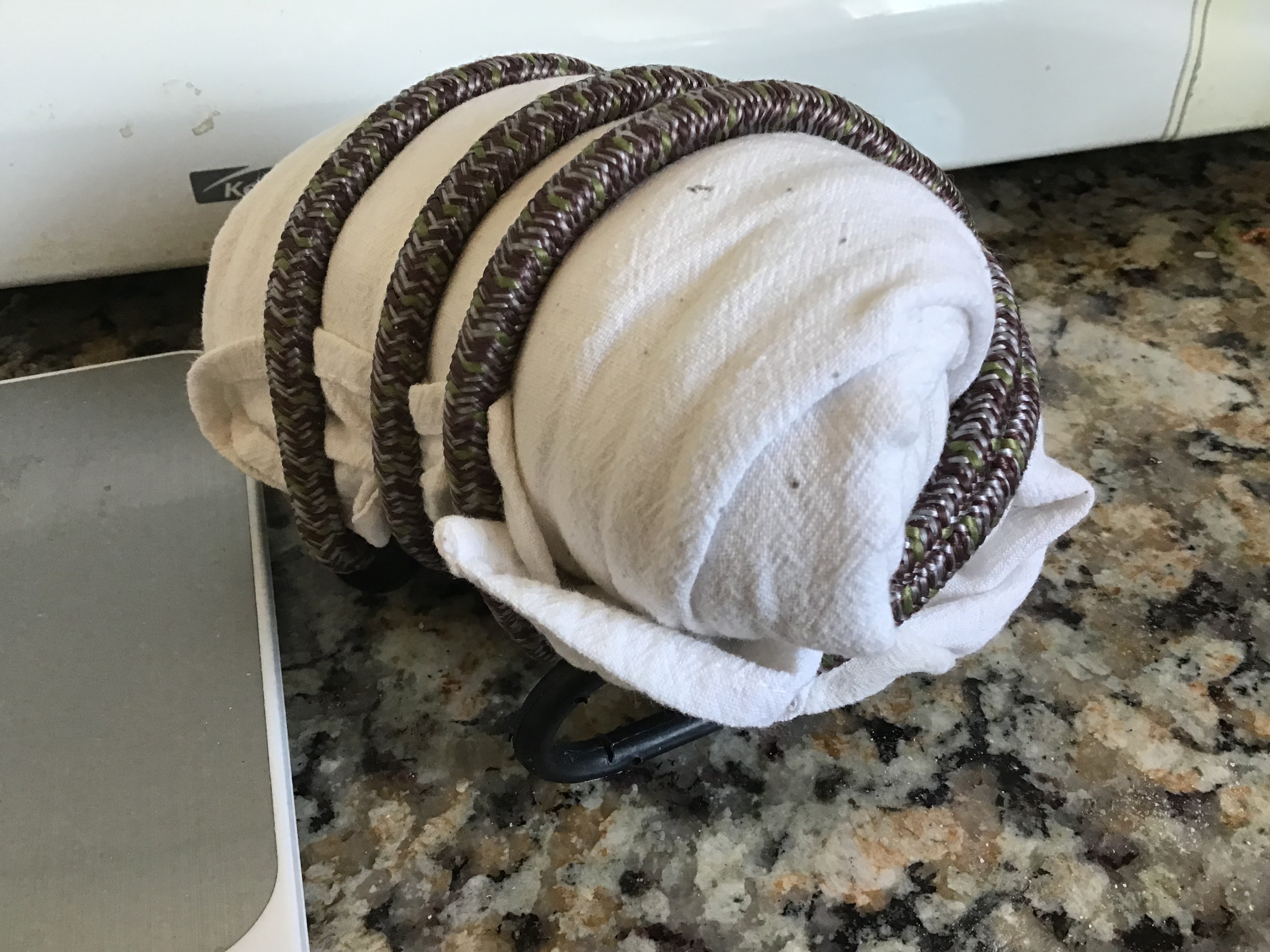Oldskewl
Well-Known Member
Yeah, I did the bun and poke a hole method. I'll have to try the pro method and see which I like better.

Looks ain't everything, they look delicious!Yeah, I did the bun and poke a hole method. I'll have to try the pro method and see which I like better.
I like the bagel with a decent sized hole, though the last batch I rolled didn’t end up the best shape and size. The poke method some people prefer because they don’t end up with much of a hole, which is okay for sandwiches.Yeah, I did the bun and poke a hole method. I'll have to try the pro method and see which I like better.















![Craft A Brew - Safale S-04 Dry Yeast - Fermentis - English Ale Dry Yeast - For English and American Ales and Hard Apple Ciders - Ingredients for Home Brewing - Beer Making Supplies - [1 Pack]](https://m.media-amazon.com/images/I/41fVGNh6JfL._SL500_.jpg)




If the knead cycle worked then you should not have to stretch and fold. Also I think you would want to do the stretch and fold before you did the cold rest.Not sure if I need to do some stretch-and-folds tomorrow or just put it in the greased baking dish and let it rise, then bake it.
It worked surprisingly well; I may make it this way all the time now. The dough almost tripled overnight. I dumped it into a greased CorningWare dish. This about halfway deflated it. I put the lid on and put it in a 105°F oven (turned off and the oven light on) to warm up and rise for 2 hours, and it's been baking a half hour now at 425°. I just took the lid off so the top crust can brown a little.About 20 minutes ago I started some sourdough in the dusty old bread machine to see how it'll work. (I'm not going to bake it in there, just using it to mix and knead the dough) I put in 175 grams of starter, 350g of warm water, 550g of bread flour, then 10g of salt, and turned on the "dough" cycle. The starter is 100% hydration, half bread flour and half whole wheat (or maybe it's half rye, I'm not 100% certain) So far it's looking good.
When it's finished I'll transfer the dough to a small Cambro bucket and put it in my cold basement utility room to ripen overnight. Not sure if I need to do some stretch-and-folds tomorrow or just put it in the greased baking dish and let it rise, then bake it.


I dry mine in an oven that has a pilot light it’s around 90 degrees it’s so dry in many homes during winter, that if you spread it thin enough it could dry without any help and it’s always good to keep some dry in the freezer incase something happens to the wet starter. BTW, it can stay in the fridge for weeks, (I have read accounts of more) without a feeding. So a week or two trip is no problem for the starter. It may have gray “hooch” on top that just means it needs a feeding. I hope this has helped.I'm going to dehydrate some of my sourdough culture because I'm baking less frequently and about to go on a little trip.
Instructions I'm reading are that I should feed it, give it a few hours, then smear a bunch in a thin layer over some parchment paper.
I have a toaster oven with settings for "dehydrate", which is supposed to get down to 86°F, and "proof", which is supposed to get down to 80°F.
I would think that either one of these settings should be able to jump-start the drying process without killing the starter, especially the proof setting.
Is this a bad idea, or should I give it a shot?
When I did mine I just spread a thin layer on parchment and set it out at room teemp for a day to dry. 80-86F would speed the process if you need to and would be a safe range. You can also use a fan to help speed the process as well.I'm going to dehydrate some of my sourdough culture because I'm baking less frequently and about to go on a little trip.
Instructions I'm reading are that I should feed it, give it a few hours, then smear a bunch in a thin layer over some parchment paper.
I have a toaster oven with settings for "dehydrate", which is supposed to get down to 86°F, and "proof", which is supposed to get down to 80°F.
I would think that either one of these settings should be able to jump-start the drying process without killing the starter, especially the proof setting.
Is this a bad idea, or should I give it a shot?
I dry mine in an oven that has a pilot light it’s around 90 degrees
... 80-86F would speed the process if you need to and would be a safe range. You can also use a fan to help speed the process as well.


Yes, instead of malt or sugar in the water, pretzels get their quick bath in water with baking soda or food grade lye. I used baking soda for these and the German pretzel recipe @ King Author to which I added 100 g of my stiff sourdough discard and a teaspoon of honey (to prove the yeast).Those look yummy.I have been wanting to attempt pretzels. Processes similar to bagels if I remember correctly
Oh, Mr. Mountain!@Hoppy2bmerry ... everything pretzel bites... ughhh you've stolen my heart. Gonna have to make some of them..
Mmm, this sounds really good, the last marbled rye attempt I made didn’t turn out to look very “marbled” so that will be a do over for me.Currently have 2 sourdough marbled rye doughs cold proofing and will pop them in the oven this afternoon, making ahead for this weekend homemade Reubens, first rye bread so wanted to give myself some time in case they flop.
Off Topic.... Bailey Mountain Brewer, I just realized you are in Duncannon, near the Red Rabit. LOL! We drive by there on our way to Williamsport, PA from Greencastle. Small World! Carry on.@Hoppy2bmerry ... everything pretzel bites... ughhh you've stolen my heart. Gonna have to make some of them..
Currently have 2 sourdough marbled rye doughs cold proofing and will pop them in the oven this afternoon, making ahead for this weekend homemade Reubens, first rye bread so wanted to give myself some time in case they flop.
Yep, that's the one.Off Topic.... Bailey Mountain Brewer, I just realized you are in Duncannon, near the Red Rabit. LOL! We drive by there on our way to Williamsport, PA from Greencastle. Small World! Carry on.


I would “prove” the yeast before adding all your ingredients. A little honey or sugar (if it’s already in the recipe great) in warm water active yeast will foam. I have some dry yeast that’s a few years old in a jar in the fridge, and it’s fine.A yeast question for you all. I have an opened, 1lb package of Saf-Instant yeast with a July 2023 expiration date. Back when I bought it a few years ago I took out some, then put the bag inside a Foodsaver bag and vac-sealed. That has been in the fridge since, and I haven't re-opened it.
Still good, or should I toss it? I don't know if bread yeast is as robust as beer yeast. I've brewed with expired yeast a few times with no problems.
I would “prove” the yeast before adding all your ingredients. A little honey or sugar (if it’s already in the recipe great) in warm water active yeast will foam. I have some dry yeast that’s a few years old in a jar in the fridge, and it’s fine.



Just make a little starter, some warm water bit of sugar and some flour.A yeast question for you all. I have an opened, 1lb package of Saf-Instant yeast with a July 2023 expiration date. Back when I bought it a few years ago I took out some, then put the bag inside a Foodsaver bag and vac-sealed. That has been in the fridge since, and I haven't re-opened it.
Still good, or should I toss it? I don't know if bread yeast is as robust as beer yeast. I've brewed with expired yeast a few times with no problems.
I know you already dumped the yeast, but since you asked; I have the tail end of a one pound pack of Saf-instant yeast that is about four years old that still works. I have it stored in the fridge in a zip-lock bag. I always proof the yeast and it has worked ok as recently as last week.A yeast question for you all. I have an opened, 1lb package of Saf-Instant yeast with a July 2023 expiration date. Back when I bought it a few years ago I took out some, then put the bag inside a Foodsaver bag and vac-sealed. That has been in the fridge since, and I haven't re-opened it.
Still good, or should I toss it? I don't know if bread yeast is as robust as beer yeast. I've brewed with expired yeast a few times with no problems.

It just might be okay, and not a brick. I hope you bake it.Curious what to expect with a sourdough that I let rise to much.. so basically I started one yesterday and finished stretch and folds at like 7 o'clock cause I got busy.. well I figured I'd be awake long enough to let it bulk rise and transfer it to the fridge and bake today... well no I fell asleep and woke up to a dough that was climbing out of my glass bowl.. so I transferred it anyway, and it deflated some during that process, it's now in a loaf pan in the fridge, figured I'd bake it later today or tomorrow. It shrank to about the height that I normally put in the loaf pan so I'm guessing it won't rise when I take it back out of the fridge and I won't get the same rise or oven spring I normally get?

I am baking it tomorrow so we'll find out, plan is sourdough BLTsIt just might be okay, and not a brick. I hope you bake it.
Phew, thanks for the explanation. I was thinking something far worse.IYKYK.
View attachment 873298
Training the levito madre for panettone. A process I didn’t know how to do last Christmas.